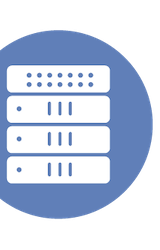Ray Lucchesi recently discussed MinIO’s enhancement to their object storage which now supports strong consistency, ensuring more reliable data transactions. He also explored how MinIO serves as an effective object gateway by facilitating the integration of S3-compatible storage into traditional apps without major changes. For additional insights from Cloud Field Day 23, you can read more articles by Ray Lucchesi on Silverton Consulting.
We Are Still in the Early Innings of AI
Alastair Cooke explores the nascent stage of AI development following a delegate discussion at AI Field Day 6. The panel emphasized that while significant progress has been made, the technological journey is still in its early phases. They also discussed various advancements and challenges in the AI field, underscoring the potential and limitations currently faced by the industry. For more insights and detailed analysis, watch Techstrong AI.
GreyBeards talk AgenticAI with Luke Norris, CEO&Co-founder, Kamiwaza AI
In a recent episode of the GreyBeards on Storage podcast, Ray Lucchesi and Jason Collier engaged in a compelling conversation with Luke Norris, CEO and Co-founder of Kamiwaza AI. They discussed the innovative approach of AgenticAI, exploring its potential impact on the tech industry following the Kamiwaza presentation at AI Field Day 6.
AI Chatbots – A Chatty Companion or a Sneaky Trap?
In a recent analysis following an AI Field Day delegate roundtable, Sulagna Saha explores the double-edged nature of AI chatbots, assessing their benefits as efficient virtual assistants versus their risks as potential privacy invaders. Saha critically examines the mechanisms behind these AI systems, how they interact with user data, and the implications for personal privacy and security. For comprehensive insights into AI Field Day 5, check out more articles by Sulagna Saha on Techstrong AI.
Company Acquisitions are a Necessary Evil in Enterprise Tech
The IT industry’s reliance on acquisitions is a necessary driver of innovation, though they often seem to get in the way of competition and progress. This episode of the Tech Field Day podcast, recorded during Cloud Field Day 21, features Ray Lucchesi, Jon Hildebrand, Ken Nalbone, and Stephen Foskett considering whether acquisitions in the IT industry are a necessary evil or a detriment to innovation. Acquisitions are often seen as a double-edged sword, with both positive and negative implications. On one hand, acquisitions can fuel innovation by providing smaller companies with the resources and market access they need to scale their ideas. On the other hand, they can stifle competition, lead to cultural clashes, and sometimes result in the disappearance of promising technologies or products.
Enfabrica MegaNIC, a solution to GPU backend networking
Enfabrica has introduced the MegaNIC, a cutting-edge network interface card tailored for backend GPU applications, designed to address network congestion effectively. The device utilizes their new ACF-S ASIC, supporting advanced features like PCIe lane switching, Ethernet connectivity, and top-of-rack routing, all enhanced by software-defined networking to improve GPU interconnectivity. With its “Millennium” chip offering an 8 Tbps bandwidth and capable of connecting up to four GPUs via high-speed Ethernet links, the MegaNIC aims to boost performance and reduce power use in large-scale GPU superclusters. Read more in this article by Ray Lucchesi following Enfabrica’s presentation at AI Field Day 5.
Ethernet is not Ready to Replace InfiniBand Yet
AI networking is making huge strides toward standardization but Ethernet isn’t ready to displace the leading incumbent InfiniBand yet. In this episode of the Tech Field Day Podcast, Tom Hollingsworth is joined by Scott Robohn and Ray Lucchesi to discuss the state of Ethernet today and how it is continuing to improve. The guests discuss topics such as the dominance of InfiniBand, why basic Ethernet isn’t suited to latency-sensitive workloads, and how the future will improve the technology.
GCP Cloud Run and VertexAI
Ray Lucchesi takes a deep dive into Project Gemini at Cloud Field Day 20, showcasing Google Cloud Platform’s (GCP) integration of Cloud Run and VertexAI. His analysis presents a future where cloud applications can effortlessly scale while leveraging powerful machine learning models to deliver intelligent and responsive services. Lucchesi’s article highlights GCP’s efforts to streamline the deployment of cloud-native applications and ML capabilities, marking a significant step in simplifying complex cloud operations for developers and enterprises.
Computational (DNA) Storage – End of Evolution Part 4
Ray Lucchesi explains the progression of DNA storage as presented by SNIA at the recent Storage Field Day event. The author explains the concept of computational storage in DNA strands and elaborates on the potential efficiency of this methodology in terms of data density and orchestration. The article implies that the technology is still in its nascent phase with accuracy rates around 70-80%, but suggests a promising future with the incorporation of innovative features like error-correcting codes (ECC).
155: GreyBeards SDC23 Wrap Up Podcast With Dr. J Metz, Technical Dir. Of Systems Design AMD and Chair of SNIA BoD
Dr. J Metz, Technical Director of Systems Design at AMD and Chair of SNIA BoD, recently made a guest appearance on the GreyBeards on Storage podcast, detailing highlights from the Storage Developers Conference 2023 and Storage Field Day and charting the ongoing research directions of SNIA. The discussion touched on topics from DNA data storage and Smart Data Transfer Interfaces (SDXI) to challenges and future opportunities in storage and memory sectors. With a track record of deconstructing complex systems and technologies, Dr. Metz’s expertise in storage networking constitutes essential listening for professionals and enthusiasts in the IT industry.
Dell EMC PowerStore X and the Edge
Ray Lucchesi attended the Dell exclusive Tech Field Day event this past summer and couldn’t figure out why it struck a nerve in him until now! He was very interested in the presentation’s Dell gave on PowerStore X appliances and AppsON technologies. Want to read more from Ray, check out his thoughts here!
CTERA, Cloud NAS on Steroids
The GreyBeard himself, Ray Lucchesi, breaks down the Storage Field Day presentation of CTERA, which he attended as a delegate. He describes their cloud NAS service, which he believes is akin to other cloud NAS offerings, except on steroids. Read the entire post to learn more, and watch CTERA’s performance for all of their product overview.
Kasten, Kafka & the Quest to Protect Data
Ray Lucchesi, delegate at June’s Cloud Field Day, details his experience at the event, and his takeaways from the presentation by Kasten by Veaam. He hones in on how the product can be used to backup Apache Kafka instances, diving into deep technical detail about his takeaways. Watch the presentation from Kasten by Veeam to learn the basis behind Lucchesi’s breakdown.
New Era of Graphical AI Is Near
This post by one of the GreyBeards himself, Ray Luchessi, describes how Intel is changing the game when it comes to AI-driven graphs. Lucchesi experienced Intel’s presentation from May’s AI Field Day event firsthand as a delegate, and has some strong opinions regarding their Katana AI product. Read all about them here, and watch the associated AI Field Day presentation for more technical information from Intel.
118: GreyBeards Talks Cloud-Native Object Storage With Greg DiFraia, Scality and Stephen Bacon, HPE
In one of the latest GreyBeards On Storage Podcasts, Ray Lucchesi and Keith Townsend talk with HPE’s Stephen Bacon and Scality’s Greg DiFraia to talk about their joint partnership to release ARTESCA: a new cloud native object storage solution. The Scality-HPE solution ARTESCA was announced at a Tech Field Day Exclusive event last month where Ray was a delegate. On the podcast they discuss the direction of the IT world, edge solutions, and of course ARTESCA! Head over to the GreyBeards On Storage page to listen to the full, enlightening conversation
115-GreyBeards Talk Database Acceleration With Moshe Twitto, CTO&Co-founder, Pliops
Earlier this year, Ray Lucchesi had the opportunity to join us as a delegate at Storage Field Day and got to learn about Pliops at the event. In this episode of the Greybeards on Storage podcast, they are joined by Moshe Twitto, CTO and Co-Founder at Pliops, to discuss Pliops’ technology. To learn more and listen to the full conversation, check out this episode!
Storageless Data!?
At Storage Field Day in January, Ray Lucchesi had the opportunity to join us as a delegate and see Hammerspace’s presentation. At the event, Hammerspace showcased its vision for storageless data. In this blog, Ray explains, “Essentially, Hammerspace creates a global file system for your data, across any locations you wish to use it, with great caching, optimized data transfer and with real storage behind it.” For more of Ray’s thoughts on Hammerspace and storageless data, check out his blog!
Data Science Storage With NetApp’s Python Toolkit
At Storage Field Day in January, Ray Lucchesi had the opportunity to join us as a delegate and see NetApp’s presentation on its NetApp Data Science Toolkit. On his blog, Ray focuses on the Python SDK to manage NetApp storage for data scientists and AI researchers. He was impressed by this concept, as he comments: “I’m not a data science expert but a Python SDK for storage management just makes so much sense to me I just had to take a look.” For more of Ray’s analysis, check out his blog!
The Rise of MinIO Object Storage
Ray Lucchesi saw MinIO present at Storage Field Day in January and thought they had a great session. In a post on his Ray on Storage blog, Ray details the advantages of the open source nature of their products as well as the MinIO Subscription Network “SubNet.” Check out his full post on his blog or watch the MinIO presentations on the Tech Field Day website!







